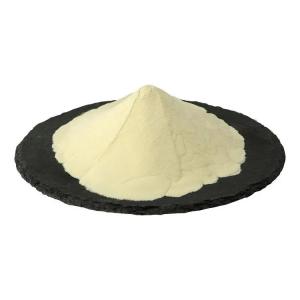Phosphatidyl serine is added to sports drinks.
Time:2025-08-13Phosphatidylserine (PS) is a naturally occurring phospholipid that plays a key structural role in cell membranes. It is present in various foods and can also be produced for use as an ingredient in supplements, functional foods, and beverages. In recent years, PS has attracted interest as an addition to sports drinks, where it is incorporated as part of the product’s formulation strategy to appeal to active individuals and fitness enthusiasts.
Chemical Nature and Properties
Phosphatidylserine belongs to the class of phosphoglycerides, composed of a glycerol backbone, two fatty acid chains, and a phosphoserine head group. It is typically amphiphilic, meaning it has both hydrophilic and hydrophobic regions, allowing it to interact well with both water and lipid environments. PS is sensitive to oxidation, and in beverage applications, it often requires stabilizing agents or protective encapsulation to maintain quality during shelf life.
Sources and Production
Commercial PS used in sports drinks is usually derived from plant sources such as soybeans or sunflower lecithin, ensuring a consistent, allergen-controlled supply. The extraction process typically involves purification steps to remove unwanted components, followed by concentration and drying. For liquid beverage applications, PS may be converted into dispersible or emulsified forms for easier integration into aqueous systems.
Formulation in Sports Drinks
Incorporating phosphatidylserine into sports drinks requires consideration of solubility, stability, and flavor compatibility. Since PS is lipid-based, it does not dissolve naturally in water. Manufacturers often use emulsification technologies, microencapsulation, or liposomal delivery systems to keep it evenly dispersed. pH adjustment, antioxidant inclusion, and controlled processing temperatures can further help preserve its quality.
Applications and Market Positioning
Sports drinks containing phosphatidylserine are typically marketed in the premium or functional beverage segment. They may be combined with electrolytes, carbohydrates, amino acids, and plant extracts to create a multi-ingredient formula aimed at athletes or active consumers. PS is often highlighted on product labels and promotional materials as a distinctive component that differentiates the drink from conventional hydration beverages.
Packaging and Stability Considerations
Because PS is prone to degradation when exposed to light, heat, or oxygen, packaging choices are crucial. Opaque bottles, nitrogen flushing, and cold-fill processing can extend product shelf life. Additionally, maintaining emulsion stability over time helps prevent sedimentation or phase separation in ready-to-drink formulations.
Conclusion
Phosphatidylserine’s integration into sports drinks reflects the growing trend toward multifunctional beverages that combine hydration with added nutritional elements. Through careful formulation and packaging, manufacturers can successfully incorporate PS into liquid products while maintaining its integrity and sensory appeal.


 CN
CN





